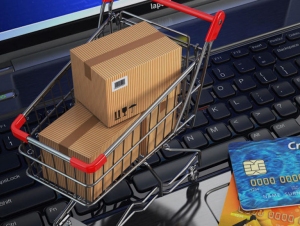
Five Key Trends Disrupting the Paper and Board MarketNew research from Smithers Pira reveals the top disruptive trends that are having a profound effect on the paper and board market.  By 2020 it is estimated that around $355 billion of all retail sales in China will be conducted over e-commerce, and that over 15% of US sales will use this means in the same year.
By 2020 it is estimated that around $355 billion of all retail sales in China will be conducted over e-commerce, and that over 15% of US sales will use this means in the same year.
Feb. 26, 2019 - The paper and board industry is diversifying and responding to an increasingly globalised marketplace. Global megatrends are reshaping the market faster than ever. Smithers Pira's new report — Ten-Year Forecast of Disruptive Technologies in Paper and Board to 2028 — pinpoints the top 20 disruptive technologies that are impacting the evolution of the paper and board industry. Currently the worldwide supply of paper and board is almost 420 million tonnes. During the last 20 years China has taken the lead in terms of production volumes surpassing the US. In Europe the largest volumes are produced in Germany, Finland and Sweden. E-commerceE-commerce retail sales are continuing to rocket, with the US and China currently the two largest e-commerce markets. By 2020 it is estimated that around $355 billion of all retail sales in China will be conducted over e-commerce, and that over 15% of US sales will use this means in the same year. Internet shopping by consumers is a key driver to the demand for new packaging solutions. Consumer packaging — such as cartonboards — serves the needs of both on-the-shelf display and advertising and of the carriers of small-size goods. This trend is creating positive growth rates in the demand for corrugated boxes and its raw materials. Demand is growing for shorter lead times and for a commitment to next-day and increasingly, where feasible, same-day delivery services. This means packaging must be available immediately and in the best possible corrugated format. Big dataUse of Big Data for different applications — marketing, sales, production optimisation and maintenance — is approaching Industry 4.0, which relies on connected devices, a large-scale deployment of versatile sensors and intelligent systems. Many key process control applications — such as online controls of basis weight, moisture and other properties — have long been based on Big Data analytics collected from fast-running paper machines. Another example of this trend is the use of Big Data analytics in forestry operations to evaluate the growth and volume of harvestable trees for wood supply. Big Data analytics will become widely popular in all phases of the paper and board value chain during the next ten years. New innovations can be expected to evolve and reach further down the paper and board supply chain. LightweightingLightweight packaging boards offer multiple benefits depending on the end use. In luxury cartonboards lighter weight boards can improve brand value to major customers. It can also meet the demands of expanding a customer base, building on successful branding, and supporting business growth while increasing production capacity. Demand for lighter weight packaging board will continue to grow due to the many advantages it offers converters and end users. The principal gains from switching to a lighter weight board are:
Intelligent/smart sensorsTypical measurements in the pulp and papermaking process — flow, temperature, pH, consistency — are taken and fed back into the process control cycle. One way of advancing process controls is to develop and fit sensors with smarter built-in intelligence. In the evolution of industrial automation and control, instrumentation is getting smarter and the data generated at all levels of the production processes is increasingly available to improve quality, flexibility, efficiency and productivity. This would not be possible without smart sensors, which generate the data and allow further functionality from self-monitoring and self-configuration to condition the monitoring of complex processes, such as paper and board machines. Across the next decade, the paper and board industry will feel the benefit of intelligent sensors in multiple applications in the mill — for example, when targeting reductions in downtime and breaks at paper and board machines. RecyclabilityRecyclability is becoming more of a key requirement for flexible and rigid consumer packaging products. When entering recycling streams many traditional waterproofing and oil/grease-proofing barrier coatings are hard to remove economically and can lead to such packs being sent to landfill. Recyclable barrier coatings will develop fast over the next ten years, but costs will be a limiting factor. The pressures are mounting related to the recycling of plastic waste and the EU has set a target to collect and recycle 55% of all plastic packages by 2030. This creates a significant potential for new ways to reuse this recycled material for new products, such as recyclable barriers. Ten-Year Forecast of Disruptive Technologies in Paper and Board to 2028 pinpoints the leading 20 technologies and analyses each trend critically to determine its impact across the decade. For more information and purchasing options, download the brochure here. Smithers Pira is the worldwide authority on packaging, paper and print industry supply chains. For more information please visit: www.smitherspira.com. SOURCE: Smithers Pira |